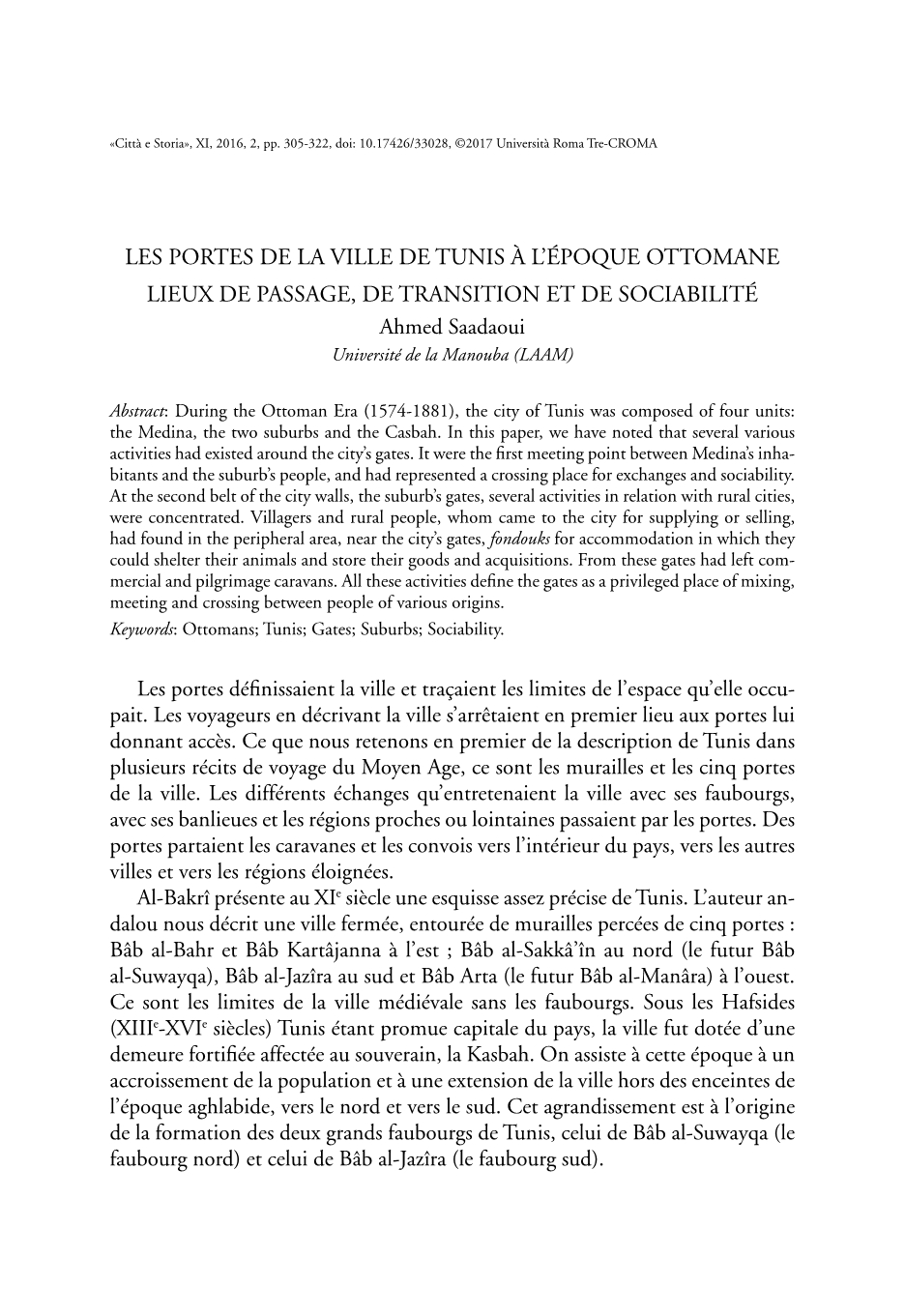Indice degli autori
CITTÀ & STORIA » 2016/2 » Portes et péripheries
ISSN 1828-6364
Saadaoui Ahmed
Les portes de la ville de Tunis à l’époque ottomane : lieux de passage, de transition et de sociabilité
pp.305-322, DOI 10.17426/33028
Articoli
Abstract: During the Ottoman Era (1574-1881), the city of Tunis was composed of four units:
the Medina, the two suburbs and the Casbah. In this paper, we have noted that several various
activities had existed around the city’s gates. It were the first meeting point between Medina’s inhabitants
and the suburb’s people, and had represented a crossing place for exchanges and sociability.
At the second belt of the city walls, the suburb’s gates, several activities in relation with rural cities,
were concentrated. Villagers and rural people, whom came to the city for supplying or selling,
had found in the peripheral area, near the city’s gates, fondouks for accommodation in which they
could shelter their animals and store their goods and acquisitions. From these gates had left commercial
and pilgrimage caravans. All these activities define the gates as a privileged place of mixing,
meeting and crossing between people of various origins.
Keywords: Ottomans; Tunis; Gates; Suburbs; Sociability

Referenze
- download: n.d.
- Url: http://archivio.centroricercheroma.it/?contenuto=indice-degli-autori&idarticolo=1298
- DOI: 10.17426/33028
- citazione: A. Saadaoui, Les portes de la ville de Tunis à l’époque ottomane : lieux de passage, de transition et de sociabilité, "Città & Storia", XI/2, pp.305-322, DOI: 10.17426/33028

